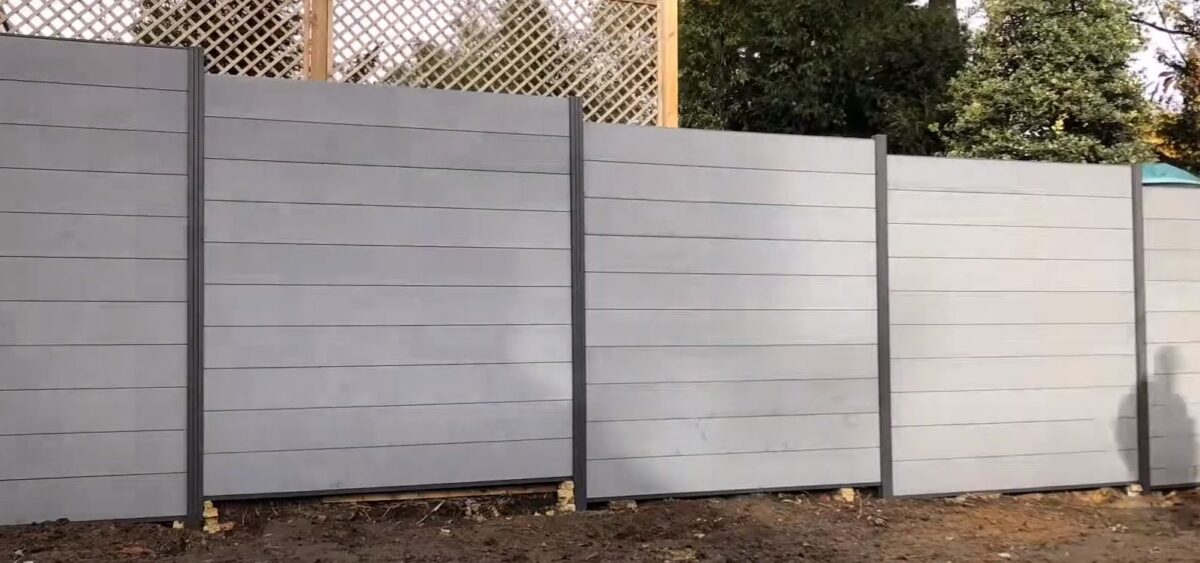Benefits of Using Concrete for Fence Posts
Concrete is often the go-to material for setting fence posts due to its numerous benefits. It provides a solid, durable foundation that ensures your fence remains stable and secure for many years.
- Stability: Concrete offers exceptional stability, preventing the posts from shifting over time due to weather or ground movement.
- Durability: It protects wooden posts from moisture and rot, significantly extending their lifespan.
- Strength: Concrete can withstand high winds and other environmental stresses, keeping your fence upright and intact.
- Maintenance: With concrete foundations, fence posts require less maintenance and fewer repairs over time.
Drawbacks of Using Concrete for Fence Posts
While concrete has many advantages, there are some potential drawbacks to consider.
- Cost: Using concrete can be more expensive than other methods due to material and labour costs.
- Labour Intensive: The installation process is more labour-intensive, requiring proper mixing, pouring, and setting of concrete.
- Drainage Issues: Improper installation can lead to poor drainage around the posts, causing water to pool and potentially accelerating rot in wooden posts.
Alternatives to Concrete for Fence Posts
For those looking for alternatives to concrete, there are several options available, each with its own set of benefits and considerations.
Gravel
- Advantages:
- Better drainage compared to concrete.
- Easier to install and adjust if necessary.
- Less expensive and labour-intensive.
- Drawbacks:
- Provides less stability than concrete.
- May require more frequent adjustments or replacements.
Metal Spikes
- Advantages:
- Quick and easy installation.
- No need for digging or concrete mixing.
- Good for temporary or movable fences.
- Drawbacks:
- Less stable and durable than concrete.
- Not suitable for all soil types.
Foam
- Advantages:
- Lightweight and easy to handle.
- Expands to fill the post hole, providing good stability.
- Faster setting time compared to concrete.
- Drawbacks:
- Generally more expensive than concrete.
- Not as strong or durable for heavy-duty fencing.
Health and Safety Considerations
When installing fence posts, safety should be a top priority.
- Wear Protective Gear: Use gloves, safety glasses, and sturdy footwear to prevent injuries.
- Handle Materials Safely: Follow proper lifting techniques to avoid strains and injuries.
- Mix Concrete Properly: Use caution when mixing and pouring concrete to avoid respiratory issues from dust and fumes.
Local Considerations in Auckland
Auckland’s diverse climate and terrain can impact the choice of foundation material for fence posts.
- Green Bay: Known for its wet conditions, concrete is ideal here for its durability and resistance to moisture.
- Glenfield: With its mix of residential and commercial properties, concrete provides the necessary stability and security for fences in this area.
Types of Fences and Their Foundation Needs
Wooden Fences
-
- Concrete Foundations: Highly recommended to prevent rot and provide stability.
- Alternative Foundations: Gravel can be used but may require more maintenance.
Vinyl Fences
-
- Concrete Foundations: Provides a solid base to prevent shifting.
- Alternative Foundations: Gravel can also be used if properly compacted.
Metal Fences
-
- Concrete Foundations: Necessary for heavy-duty metal fences to ensure stability.
- Alternative Foundations: Metal spikes can be used for lighter, temporary fences.
Composite Fences
-
- Concrete Foundations: Provides durability and prevents shifting.
- Alternative Foundations: Foam can be an option for quick installations.
Foundation Materials for Fence Posts
| Foundation Type | Stability | Cost | Installation Complexity | Maintenance Needs | Ideal For |
| Concrete | High | Moderate to High | Labour-Intensive | Low | Permanent, durable fencing |
| Gravel | Moderate | Low | Easy | Moderate | Temporary or movable fencing |
| Metal Spikes | Low to Moderate | Low | Very Easy | Moderate | Temporary, lightweight fencing |
| Foam | Moderate | High | Easy | Low | Quick installations, moderate stability |
Technical Insights on Using Concrete for Fence Posts
Mixing and Pouring Concrete
- Preparation: Clear the area and dig post holes to the required depth.
- Mixing: Use a concrete mixer or mix manually to achieve the correct consistency.
- Pouring: Fill the post hole with concrete, ensuring the post is level and properly aligned.
- Curing: Allow the concrete to cure for at least 24 hours before attaching fence panels.
Drainage Considerations
- Drainage Holes: Include drainage holes at the base of the concrete to prevent water accumulation.
- Slope: Ensure the top of the concrete slopes away from the post to direct water runoff.
Maintenance Tips
- Regular Inspection: Check for cracks or signs of movement in the concrete base.
- Sealant Application: Apply a sealant to the base of wooden posts to provide extra protection against moisture.
Using concrete for fence posts offers numerous benefits, including stability, durability, and low maintenance. However, it’s essential to consider the specific needs of your property and the type of fence you’re installing. For professional advice and assistance with your fencing project, consider engaging Quality Fencing Auckland to ensure a high-quality fence installation that meets your requirements.
Other Locations:



